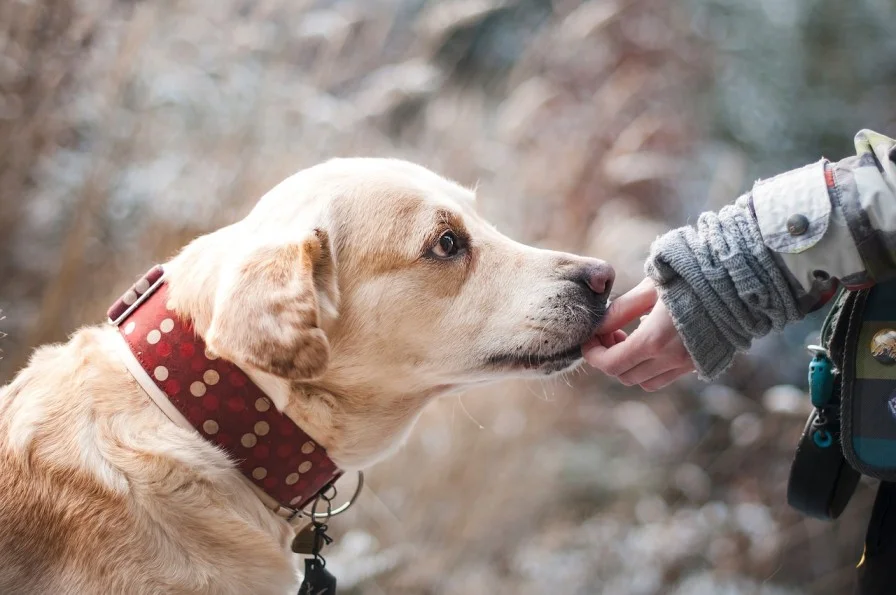How long are dogs pregnant?
Dogs are typically pregnant for about 58 to 68 days, which translates to approximately 9 weeks. The exact length of a dog’s pregnancy can vary based on several factors, including the breed, size of the dog, and individual variations. Here’s a detailed explanation:
Pregnancy Duration
- General Range: The standard pregnancy duration for dogs is around 63 days from conception to whelping (giving birth). This is the average time frame that veterinarians use to estimate when a dog will give birth.
- Variation: The pregnancy can range from 58 to 68 days. This variation can be influenced by factors such as:
- Breed: Larger breeds might have slightly longer gestation periods compared to smaller breeds.
- Individual Differences: Each dog’s pregnancy can vary based on her health and specific characteristics.
How Long Are Dogs Pregnant For?
Stages of Pregnancy
Here’s a detailed look at the stages of dog pregnancy across the three months:
First Month (Weeks 1-4)
- Week 1-2:
- Fertilization and Implantation: After mating, fertilized eggs travel to the uterus and implant into the uterine wall. At this stage, the pregnancy is not usually detectable.
- Hormonal Changes: Rising levels of progesterone prepare the uterus for pregnancy.
- Week 3-4:
- Embryo Development: Embryos start to develop, and by the end of the fourth week, they have begun to form essential organs and body structures.
- Early Signs: Physical signs of pregnancy are not yet noticeable. The female dog may start to show slight behavioral changes, such as increased appetite or mild fatigue.

Second Month (Weeks 5-8)
- Week 5-6:
- Fetal Development: The embryos develop into recognizable fetuses with defined body parts such as limbs and facial features. By the end of the sixth week, the fetus’s organs and body systems are forming.
- Physical Changes: The female’s abdomen begins to enlarge as the fetuses grow. Some dogs may show signs of increased appetite, weight gain, and a slight increase in abdominal size.
- Week 7-8:
- Further Development: Fetuses continue to grow rapidly, and their movements might become detectable. By the end of the eighth week, the puppies are nearly fully developed and ready for birth.
- Signs of Pregnancy: The female’s belly becomes noticeably larger. She may start to exhibit nesting behaviors and seek out a quiet place to prepare for whelping.
Third Month (Weeks 9)
- Week 9:
- Preparation for Whelping: The mother dog’s body prepares for labor. She may exhibit nesting behavior, restlessness, and reduced appetite.
- Physical Signs: The abdomen is very large, and the puppies are positioned in the birth canal, ready for delivery.
- Whelping: The final stage of pregnancy is marked by contractions and the actual birth of the puppies. The female will go into labor, and the puppies are delivered over several hours.
Signs of Impending Labor
- Nesting Behavior: The mother may start preparing a space for delivery, often creating a comfortable nest with bedding.
- Decrease in Appetite: As the due date approaches, she may eat less or refuse food.
- Physical Changes: You might notice physical signs such as an enlarged belly and increased restlessness.
Monitoring and Care
- Veterinary Care: Regular veterinary check-ups during pregnancy are important to ensure the health of both the mother and the puppies.
- Nutrition: Proper nutrition and care are crucial throughout the pregnancy to support the mother and the developing puppies.
The Canine Reproductive Cycle
The canine reproductive cycle, known as the estrous cycle, consists of four distinct stages: proestrus, estrus, diestrus, and anestrus. Here’s a detailed look at each stage:
1. Proestrus
- Duration: About 7 to 10 days.
- Hormonal Changes: The onset of proestrus is marked by increased levels of estrogen. This stage prepares the female dog’s body for potential mating.
- Physical Signs:
- Swelling of the vulva.
- Bloody or straw-colored vaginal discharge.
- Increased urination and behavioral changes, such as increased affection or restlessness.
- Behavior: The female attracts males but is not yet receptive to mating.
2. Estrus
- Duration: About 5 to 10 days.
- Hormonal Changes: This stage is characterized by high levels of estrogen and a peak in progesterone as the body prepares for potential pregnancy.
- Physical Signs:
- Vulva remains swollen but may start to reduce in size.
- Discharge changes to a clearer or pinkish color.
- The female is receptive to mating and may actively seek out male dogs.
- Behavior: The female is fertile and can conceive if mated during this period.
3. Diestrus
- Duration: About 60 days, which corresponds to the gestation period if the female becomes pregnant.
- Hormonal Changes: Progesterone levels are high to support pregnancy or prepare the body for the next cycle if no pregnancy occurs.
- Physical Signs:
- Vulva returns to normal size.
- Discharge decreases and may disappear.
- Behavior: If pregnant, the female will show signs of pregnancy. If not pregnant, the hormonal levels will eventually drop, leading to the end of diestrus and the start of anestrus.
4. Anestrus
- Duration: About 2 to 4 months.
- Hormonal Changes: Hormone levels are at their baseline. This stage is a period of reproductive inactivity where the female’s body rests and recovers from the previous cycle.
- Physical Signs:
- No noticeable signs of reproductive activity or discharge.
- The vulva returns to its normal size.
- Behavior: The female is not sexually receptive, and no mating behaviors are observed.
How To Tell If A Dog Is Pregnant
To determine if a dog is pregnant, several methods can be used, each with its own advantages and timing considerations:
1. Hormone Tests
- Overview: Hormone tests measure levels of specific hormones associated with pregnancy, such as relaxin.
- Timing: Tests can usually detect pregnancy about 3 to 4 weeks after mating.
- Advantages: Provides a non-invasive way to confirm pregnancy.
- Limitations: This may not be available in all veterinary practices; not as early as other methods.
2. Abdominal Palpation
- Overview: A veterinarian manually feels the dog’s abdomen to detect signs of pregnancy, such as the presence of developing puppies.
- Timing: Best performed around 28 to 35 days after mating, when the embryos are large enough to feel.
- Advantages: Provides immediate physical confirmation if successful.
- Limitations: This can be challenging to perform, especially in overweight or large-breed dogs.
3. X-rays
- Overview: X-rays can be used to visualize the skeletons of the puppies, confirming pregnancy and estimating litter size.
- Timing: Typically performed after 45 days of pregnancy, when the puppies’ bones are developed enough to be visible.
- Advantages: Allows for accurate determination of the number of puppies and monitoring for potential complications.
- Limitations: Exposure to radiation, though generally minimal, is a consideration; not suitable for early pregnancy detection.
4. Ultrasounds
- Overview: Ultrasound imaging uses sound waves to visualize the developing puppies and assess the health of the pregnancy.
- Timing: Can detect pregnancy as early as 25 days after mating.
- Advantages: Provides early confirmation of pregnancy, helps assess fetal health, and detects potential complications.
- Limitations: Requires specialized equipment and expertise; can be more expensive.
How should you act around your pregnant dog:
Caring for a pregnant dog involves special attention to her physical and emotional needs. Here are key guidelines on how to act around your pregnant dog:
1. Provide a Comfortable Environment
- Create a Quiet Space: Set up a calm, quiet area where your dog can rest and feel secure. Avoid loud noises and stressful situations.
- Comfortable Bedding: Provide a soft, clean bed or whelping box where she can relax and prepare for birthing.
2. Monitor Her Health
- Regular Vet Visits: Ensure she gets regular check-ups with a veterinarian to monitor her health and the development of the puppies.
- Watch for Changes: Keep an eye on her weight, appetite, and overall well-being. Report any unusual symptoms, such as excessive vomiting or lethargy, to your vet.
3. Adjust Her Diet
- Balanced Nutrition: Feed her high-quality, nutritionally balanced food designed for pregnant or nursing dogs. She may need increased calories and nutrients.
- Frequent, Small Meals: Offer smaller, more frequent meals to accommodate her increased nutritional needs and to prevent discomfort.
4. Limit Physical Activity
- Avoid Overexertion: While light exercise is good, avoid strenuous activities or excessive play that could stress her.
- Gentle Interaction: Engage in calm, gentle play and petting. Avoid rough handling or any activities that could cause discomfort.
5. Prepare for Whelping
- Set Up a Whelping Area: Arrange a designated area for her to give birth, complete with clean bedding and a whelping box.
- Gather Supplies: Have necessary supplies on hand, such as clean towels, a heating pad, and a clock for timing contractions.
6. Be Patient and Attentive
- Respect Her Space: Allow her to approach you when she seeks attention. Respect her need for solitude and comfort.
- Support During Labor: Be available during the whelping process to provide assistance if needed, but avoid interfering unless absolutely necessary. Consult your vet for guidance on what to do during labor.
7. Monitor Her Behavior
- Watch for Signs of Stress: Be attentive to any signs of anxiety or discomfort. If she seems overly restless or agitated, it might be a sign of impending labor or other issues.
- Encourage Calmness: Speak to her in soothing tones and offer gentle reassurance.
Preparing for your dog’s smooth labor:
Ensuring a safe and smooth pregnancy for your dog involves careful preparation and attentive care throughout the process. Here’s a detailed guide to help your pregnant dog pass her pregnancy safely:
1. Pre-Labor Preparation
- Veterinary Care: Schedule regular veterinary check-ups to monitor your dog’s health and the development of the puppies. Follow your vet’s advice on vaccinations, deworming, and any other health considerations.
- Nutritional Needs: Provide high-quality, nutritionally balanced food designed for pregnant or nursing dogs. Ensure she receives adequate calories, vitamins, and minerals to support her and her puppies.
- Whelping Area Setup: Create a quiet, comfortable space for her to give birth. Set up a whelping box or a clean, soft bed in a quiet area of your home. Ensure the area is warm, clean, and free from drafts.
2. Monitoring the Pregnancy
- Watch for Physical Changes: Monitor her weight, appetite, and behavior. Normal physical changes include an enlarging belly and increased appetite. Be alert to any signs of discomfort or health issues.
- Observe Behavioral Changes: She may exhibit nesting behavior or seek solitude as she nears labor. Allow her to find her preferred place for whelping.
3. Signs of Labor
- Early Signs: Look for signs that labor is approaching, such as restlessness, nesting behavior, and a drop in appetite. She might start panting or digging at her bedding.
- Contractions: When labor begins, she will experience contractions and may start to exhibit more noticeable discomfort. Ensure she has access to her whelping area during this time.
4. Assisting During Whelping
- Provide Support: Be present but try not to interfere unless necessary. Your presence can offer comfort, but respect her space and allow the process to unfold naturally.
- Monitor the Process: If complications arise, such as prolonged labor or signs of distress, contact your vet immediately. Keep clean towels on hand to help with delivery and to assist with the cleaning of the puppies.
- Ensure Cleanliness: Keep the whelping area clean to prevent infection. After each puppy is born, help clear the airways and stimulate breathing if needed.
5. Post-Birth Care
- Ensure Bonding: Allow the mother and her puppies to bond naturally. Ensure that all puppies are nursing and gaining weight. Monitor for any signs of issues, such as poor nursing or lethargy.
- Postnatal Check-Up: Schedule a veterinary visit for both the mother and her puppies to ensure they are healthy and developing normally. The vet can also provide guidance on caring for the puppies and the mother’s recovery.
- Nutrition and Hydration: Continue to provide high-quality food and ensure the mother has access to fresh water. She will need extra nutrients to support lactation and recovery.
6. Ongoing Care
- Monitor Health: Keep an eye on the mother’s health and well-being throughout the nursing period. Watch for any signs of infection or complications.
- Socialization: As the puppies grow, begin socializing them gently with different people and environments to ensure they develop well-adjusted behaviors.
FAQs:
How long is a dog’s pregnancy?
A dog’s pregnancy typically lasts about 58 to 68 days, with an average of 63 days from conception to whelping.
When can you first detect a dog’s pregnancy?
Pregnancy can usually be detected around 3 to 4 weeks after mating through hormone tests or veterinary examinations.
How do the stages of pregnancy break down?
The pregnancy is divided into three stages: the first month, early embryo development, the second month, fetal development, and the third month, final growth and preparation for birth.
Can a dog’s pregnancy duration vary?
Yes, the duration can vary from 58 to 68 days, with individual differences depending on breed, size, and other factors.
How can I tell when my dog is close to giving birth?
Signs of impending labor include nesting behavior, increased restlessness, and a decrease in appetite, usually occurring in the final week of pregnancy.
What should I do if my dog’s pregnancy seems unusually long?
If the pregnancy exceeds 68 days or if there are signs of complications, consult your veterinarian for advice and possible intervention.
Conclusion
In conclusion, a dog’s pregnancy typically lasts between 58 to 68 days, with an average duration of about 63 days from conception to whelping. Understanding the stages of pregnancy—first, second, and third months helps in providing appropriate care and preparation for the birthing process. Regular veterinary check-ups, proper nutrition, and creating a comfortable environment are crucial for ensuring the health and well-being of both the mother and her puppies throughout the pregnancy.




